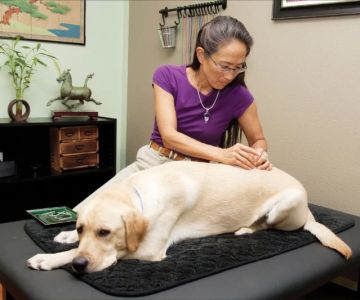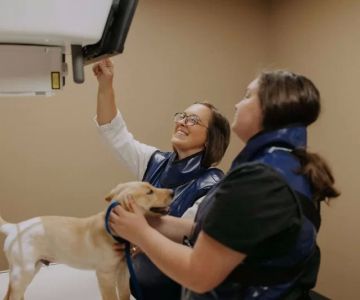How Much Does a Veterinary Assistant Make an Hour? Understanding the Salary and Pay Trends
- What is a Veterinary Assistant?
- Factors Affecting Veterinary Assistant Salary
- Average Hourly Pay for Veterinary Assistants
- Regional Variations in Veterinary Assistant Pay
- Career Advancement and Pay Growth in Veterinary Assisting
- How to Maximize Your Earnings as a Veterinary Assistant
1. What is a Veterinary Assistant?
As someone who's always had a passion for animals and healthcare, becoming a veterinary assistant seemed like the perfect way to combine my interests. A veterinary assistant plays an essential role in supporting veterinarians and veterinary technicians in their daily tasks. These tasks range from providing care to animals, preparing examination rooms, assisting during medical procedures, and even maintaining medical records. It’s a hands-on job that requires compassion, attention to detail, and the ability to handle various animals in different medical situations.
Veterinary assistants also perform administrative duties, including answering phones, scheduling appointments, and managing inventory. While the role doesn’t require a veterinary degree, it does require a deep understanding of animal care and basic medical procedures. This combination of responsibilities makes veterinary assisting a rewarding career for those who enjoy working with animals and helping in medical settings.
2. Factors Affecting Veterinary Assistant Salary
The salary of a veterinary assistant can vary significantly depending on several factors. One of the most important factors is the level of experience. New veterinary assistants typically earn less than those with years of hands-on experience. Additionally, educational qualifications can also impact pay. While some veterinary assistants only have a high school diploma, others may have completed vocational training or obtained certification, which can lead to higher wages.
Another factor that influences salary is the type of practice where a veterinary assistant works. Those working in specialty areas, such as animal hospitals or surgical centers, may earn more compared to those working in general veterinary clinics. Working in larger cities, where the cost of living is higher, also tends to offer higher salaries than rural areas.
Finally, the geographic location plays a big role in determining how much a veterinary assistant makes an hour. Salaries vary from state to state and even city to city, reflecting the local demand for veterinary services, as well as the cost of living in those areas.
3. Average Hourly Pay for Veterinary Assistants
As of recent reports, the average hourly wage for a veterinary assistant in the United States is around $15 to $18 per hour. However, this can vary based on the factors mentioned earlier. For instance, veterinary assistants just starting their careers might earn closer to $12 per hour, while those with several years of experience and additional certifications can earn up to $22 per hour or more.
The national median salary for veterinary assistants has been steadily increasing due to the growing demand for veterinary care. More pet owners are seeking medical attention for their animals, which has expanded the need for qualified veterinary staff. Additionally, the demand for veterinary assistants is expected to rise by about 15% over the next decade, which suggests that salaries may continue to grow as well.
4. Regional Variations in Veterinary Assistant Pay
One key element in determining how much a veterinary assistant makes an hour is the region in which they work. The cost of living and the demand for veterinary care vary from one place to another, which has a direct impact on wages. In large metropolitan areas like New York City, Los Angeles, or Chicago, veterinary assistants may earn higher salaries to offset the higher living costs. In these cities, hourly wages for veterinary assistants can range from $18 to $25 per hour.
In contrast, rural areas or smaller towns often offer lower pay, with veterinary assistants earning closer to the lower end of the national average, around $12 to $15 per hour. While these regions may not have as high of a cost of living, the lower pay is often compensated by a slower pace of life and a less competitive job market. However, in smaller regions, the demand for veterinary assistants might also be lower, which impacts overall wage offerings.
As a veterinary assistant, it’s crucial to consider both salary and location when looking for job opportunities. Moving to an area with a higher demand for veterinary care may result in better pay and more career opportunities in the long run.
5. Career Advancement and Pay Growth in Veterinary Assisting
Veterinary assisting offers various opportunities for career growth. As you gain experience and additional certifications, you can increase your earning potential. Many veterinary assistants start out in entry-level positions and gradually take on more responsibilities, which can lead to raises and promotions. Additionally, some veterinary assistants choose to specialize in areas such as surgery, dentistry, or exotic animal care, which often come with higher salaries.
One of the best ways to increase your salary as a veterinary assistant is by obtaining certifications or additional training. Many veterinary assistants pursue certification through organizations like the National Association of Veterinary Technicians in America (NAVTA), which offers the credential of a Veterinary Assistant Specialist (VAS). This specialized certification can make you more attractive to employers and can significantly boost your earning potential.
Furthermore, veterinary assistants who move into supervisory or management roles may see an even greater increase in their salary. These roles often come with additional responsibilities, such as managing a team of veterinary technicians and assistants, handling budgets, or overseeing medical procedures. Career advancement, whether through specialization or management roles, offers the potential for not only a higher salary but also more fulfilling work within the veterinary field.
6. How to Maximize Your Earnings as a Veterinary Assistant
If you’re looking to maximize your earnings as a veterinary assistant, there are a few steps you can take. First, always seek out opportunities to expand your knowledge and skills. As mentioned earlier, gaining certifications in specialized areas can increase your value to employers and allow you to command a higher salary. It’s also important to gain as much hands-on experience as possible. The more you know about animal care, the more valuable you’ll become in the veterinary field.
Another way to increase your earnings is by networking within the industry. Attend veterinary conferences, seminars, or online workshops to meet other professionals in the field. Sometimes, networking can lead to higher-paying job opportunities or even mentorships that guide you toward career advancement.
Finally, consider exploring different employment settings. Working in high-demand areas, such as emergency veterinary clinics or specialty animal hospitals, often comes with higher pay. While these jobs can be more intense and demanding, the pay difference can be significant enough to make the extra effort worth it.
In conclusion, understanding how much a veterinary assistant makes an hour depends on several factors, including experience, location, and additional certifications. As a veterinary assistant, there are many opportunities to increase your salary through career advancement, gaining specialized skills, and considering job settings with higher pay potential. If you’re ready to start your career or take your existing one to the next level, consider exploring more options and training programs that can increase your earning potential and help you thrive in this rewarding field.











